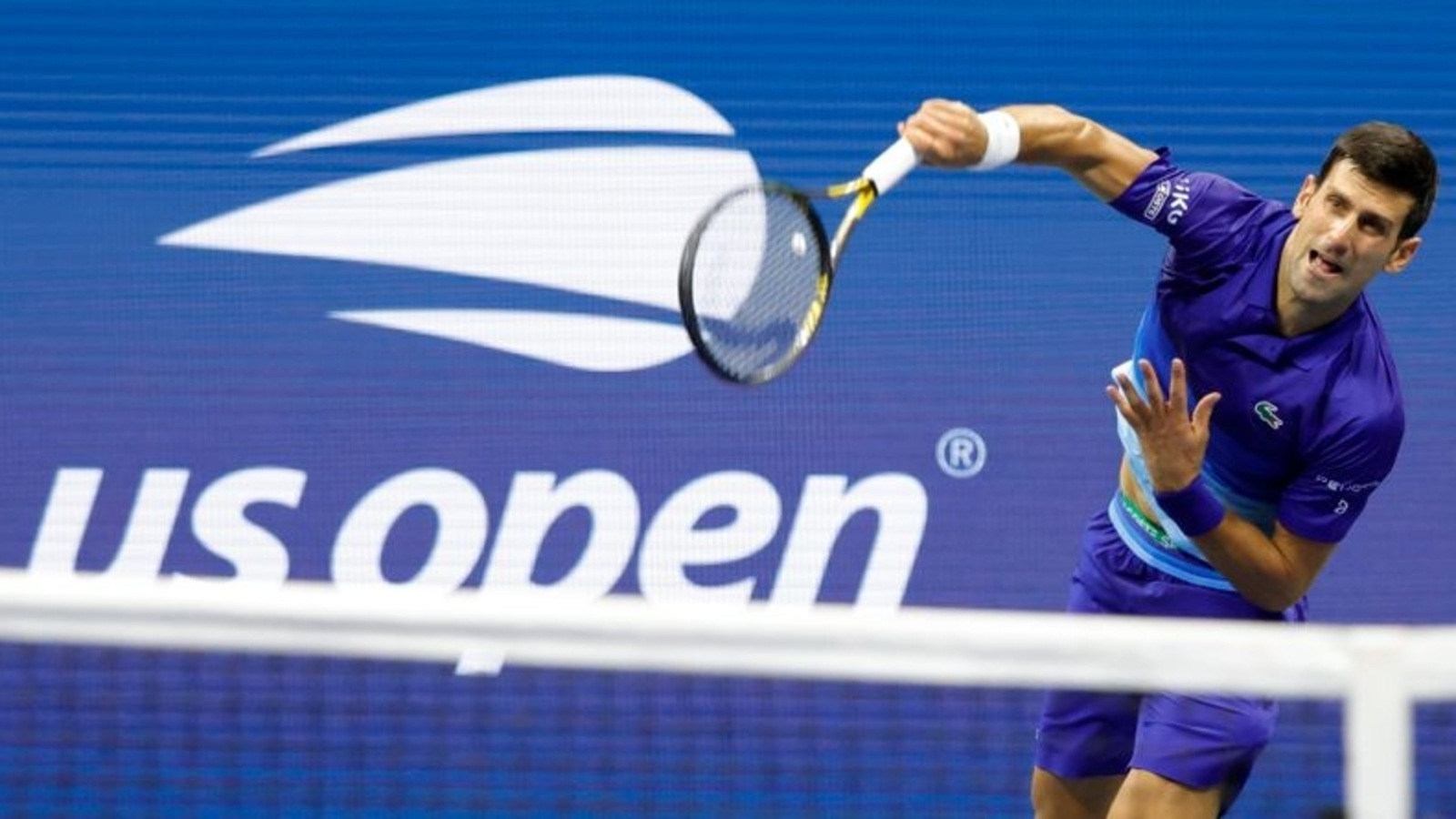
Djokovic tops teen “Ruuune!” at US Open in calendar Slam bid
If the last-name chorus of “Ruuuuuune!” in support of his relatively unknown teenage opponent at the U.S. Open bothered Novak Djokovic, he never let anyone know.
Nor was there any visible evidence that Djokovic was shaken by the shaky patches he went through while dropping a set Tuesday night as he began his historic bid to complete the first calendar-year Grand Slam in men’s tennis since 1969 and collect a record-breaking 21st major singles championship.
Djokovic was not perfect, but he didn’t need to be. All he needed to do was win, and he did, just as he’s done every time he’s played a Grand Slam match this season, whether on the hard courts of the Australian Open, the red clay of the French Open, the grass of Wimbledon or, now, the first of what he hopes will be seven times on the hard courts of Flushing Meadows.
Quickly regaining control after a second-set blip, then wearing down his cramping foe, Djokovic beat Danish qualifier Holger Vitus Nodskov Rune 6-1, 6-7 (5), 6-2, 6-1 in Arthur Ashe Stadium to reach the second round.
“It wasn’t the best of my performances,” Djokovic acknowledged, “but at the same time, he played well in the second set when it mattered.”
What a difference between the two players. Djokovic is 34; Rune 18. Djokovic is ranked No. 1; Rune 145th. Djokovic owns 20 Grand Slam titles, the men’s mark he currently shares with rivals Roger Federer and Rafael Nadal, who both withdrew from the U.S. Open with injuries; Rune had never played a single match in the main draw of a major tournament until Tuesday. Djokovic’s on-court career earnings entering this week were more than $150 million; Rune’s were less than $150,000.
Rune came in on a 13-match winning streak, built on the lower-level ATP Challenger Tour and the qualifying rounds in New York. And the crowd — back at the U.S. Open after all fans were banned last year because of the coronavirus pandemic — gave him some serious backing, responding to his pumped fists and uppercuts and pleas for more noise when he was playing at his best level in the second set.
What at first sounded like booing was actually “Rune-ing,” and the kid clearly loved the moment. So did his mother, clapping and smiling in his guest box, which also included Patrick Mouratoglou, Serena Williams’ coach. Rune has trained at Mouratoglou’s tennis academy.
Williams came so close to going 4 for 4 at the majors in 2015, before losing in the semifinals at the U.S. Open against Roberta Vinci in one of the biggest upsets in tennis history. Had Djokovic lost this, it would have been even more of a stunner.
Earlier on Day Two, the top-seeded woman, Ash Barty, made a successful return to Flushing Meadows, the site of one of the two Grand Slam tournaments she has yet to win.
The biggest holdup for Barty during her 6-1, 7-6 (7) victory over 2010 U.S. Open runner-up Vera Zvonareva came early in the first set, when there was a delay of more than five minutes because the Hawk-Eye Live electronic line-calling system went down when a TV camera wasn’t working.
“Just needed to make sure all cameras were spot on, and just, I think, plug one back in,” said Barty, the champion at the French Open in 2019 and Wimbledon this July but never past the fourth round at the U.S. Open, “and we were all right to go.”
She missed the tournament in 2020 because of the coronavirus pandemic; she remained at home in Australia for most of the season after the outbreak.
This year, for the first time, every match on every court these two weeks is operating without any line judges. Instead, the only human officiating is the chair umpire, while every shot is ruled in or out by a system that uses cameras to detect where balls land.
Last year, the U.S. Open first tried relying on solely electronic calls for each match except those played at the biggest two arenas, Ashe and Louis Armstrong Stadium, where people made the rulings. It was during a fourth-round match in Ashe against Pablo Carreño Busta that Djokovic was defaulted after dropping a game in the first set when he smacked a ball that inadvertently hit a line judge in the throat.
Carreño Busta, who eventually made the semifinals in New York for the second time and then beat Djokovic for the bronze medal at the Tokyo Olympics this August, was a surprise first-round loser Tuesday. He was eliminated 5-7, 4-6, 6-1, 6-4, 7-6 (7) by Maxime Cressy, a Paris-born American ranked 151st.
Cressy played college tennis at UCLA, as did Mackie McDonald, the American who defeated No. 27 seed David Goffin in straight sets.
In other action, the two Olympic tennis singles gold medalists won: Germany’s Alexander Zverev extended his winning streak to 12 matches with a 6-4, 7-5, 6-2 victory over Sam Querrey, and Switzerland’s Belinda Bencic beat Arantxa Rus 6-4, 6-4.
“I hope I can keep the level up and maybe even play better,” said Zverev, the runner-up at the U.S. Open last year, “because to beat Novak here is going to be an extremely difficult task.”
This story has been published from a wire agency feed without modifications to the text.
Stay connected with us on social media platform for instant update click here to join our Twitter, & Facebook
We are now on Telegram. Click here to join our channel (@TechiUpdate) and stay updated with the latest Technology headlines.
For all the latest Sports News Click Here
For the latest news and updates, follow us on Google News.

